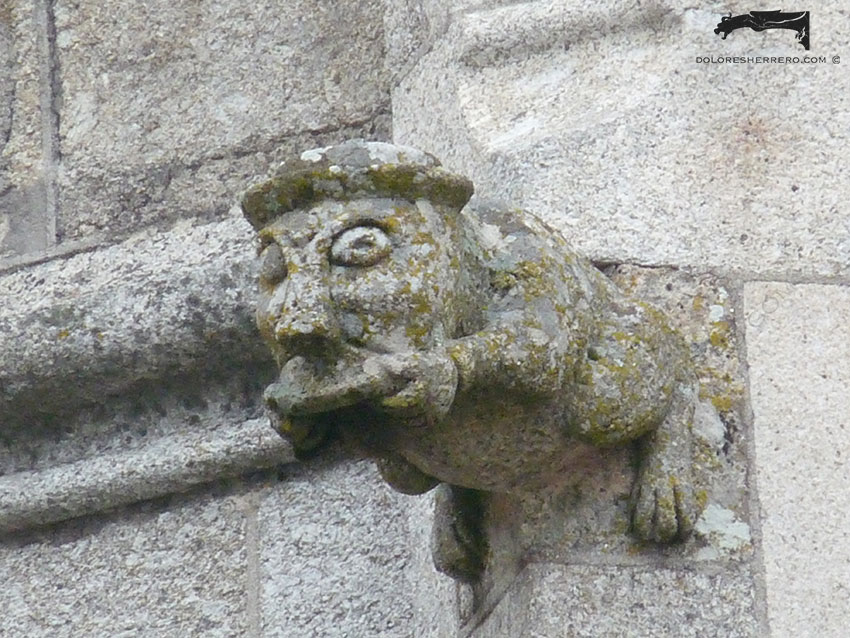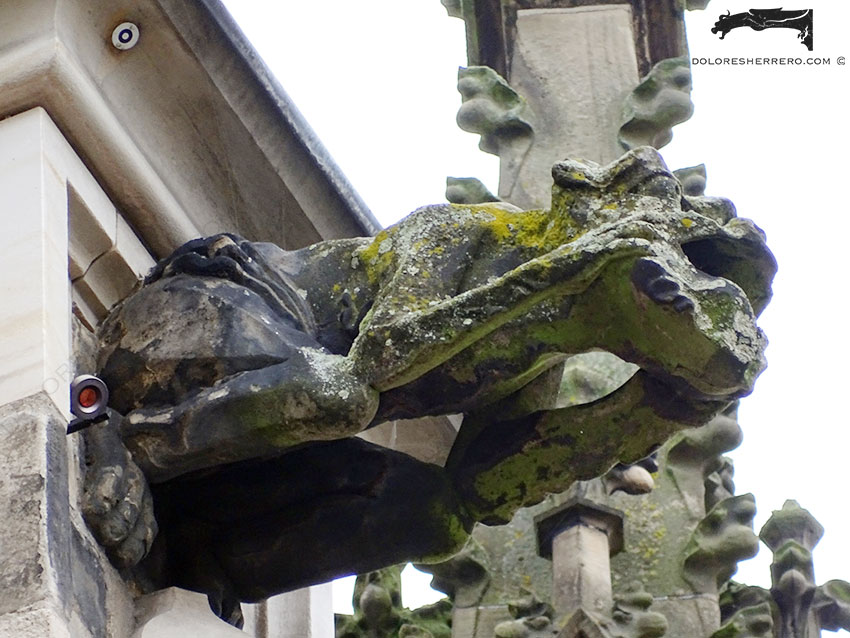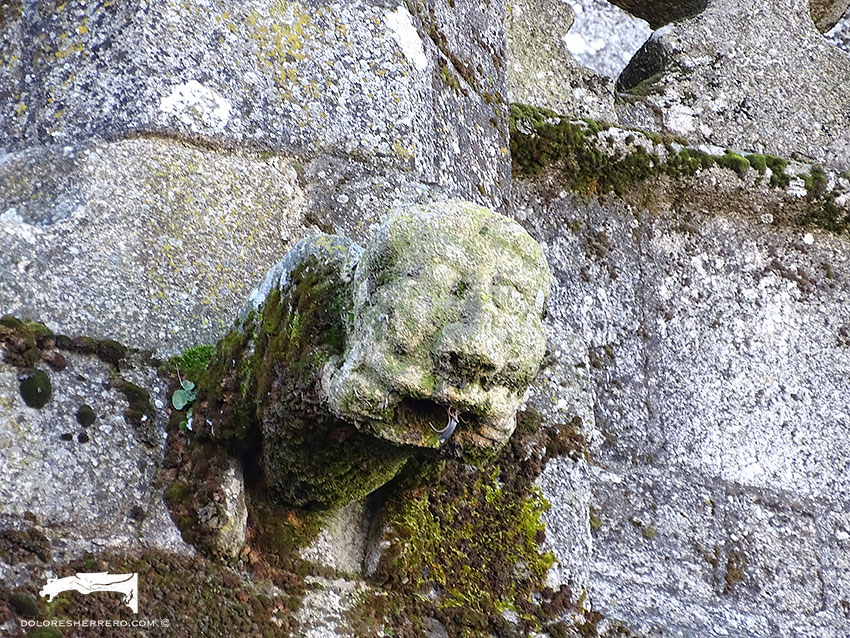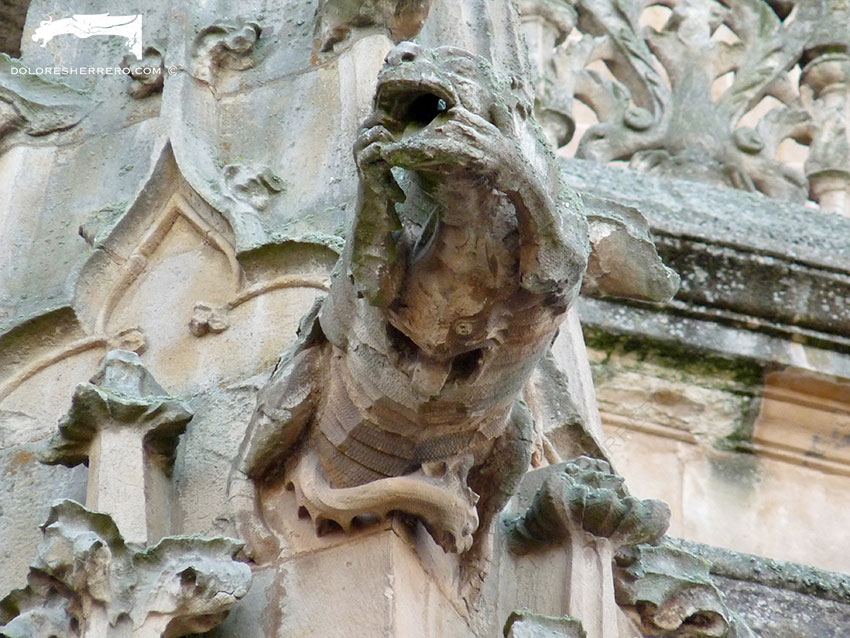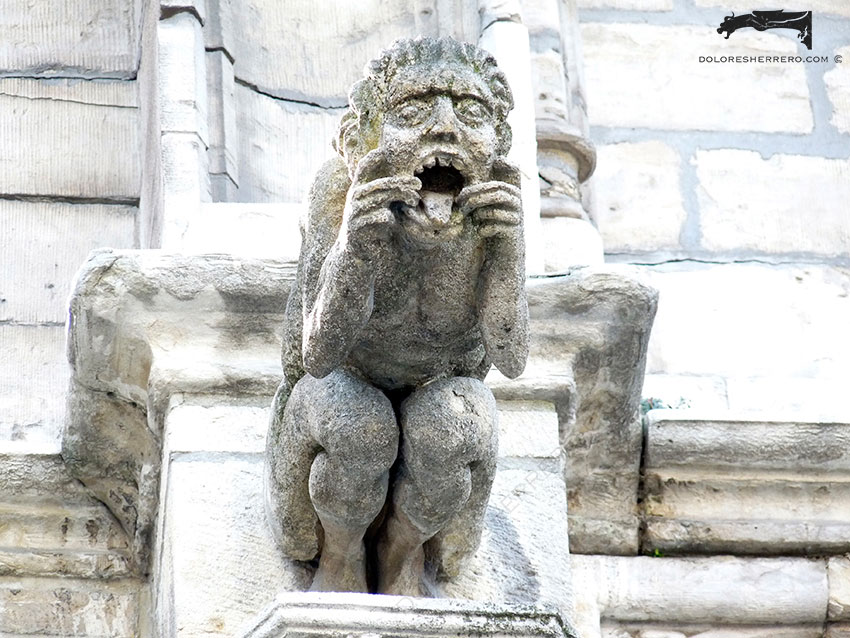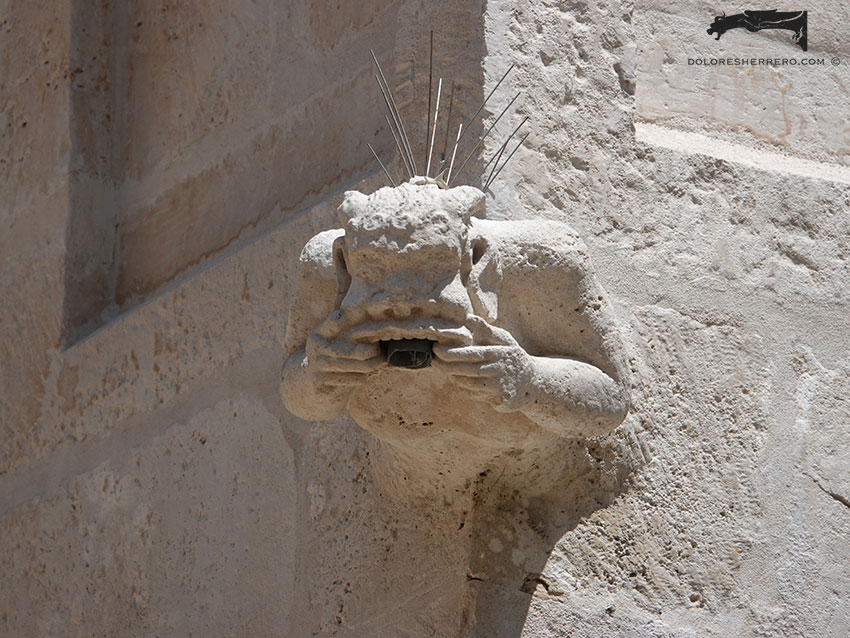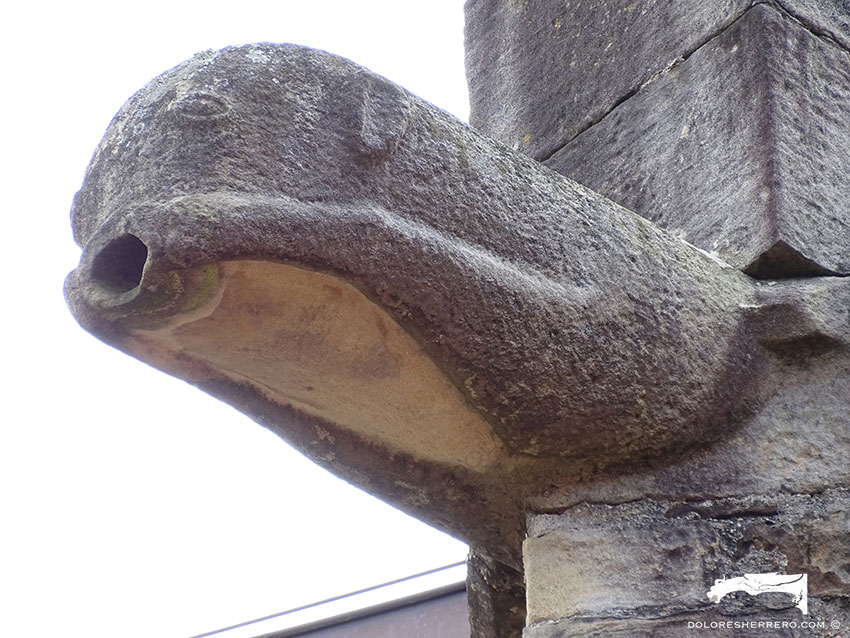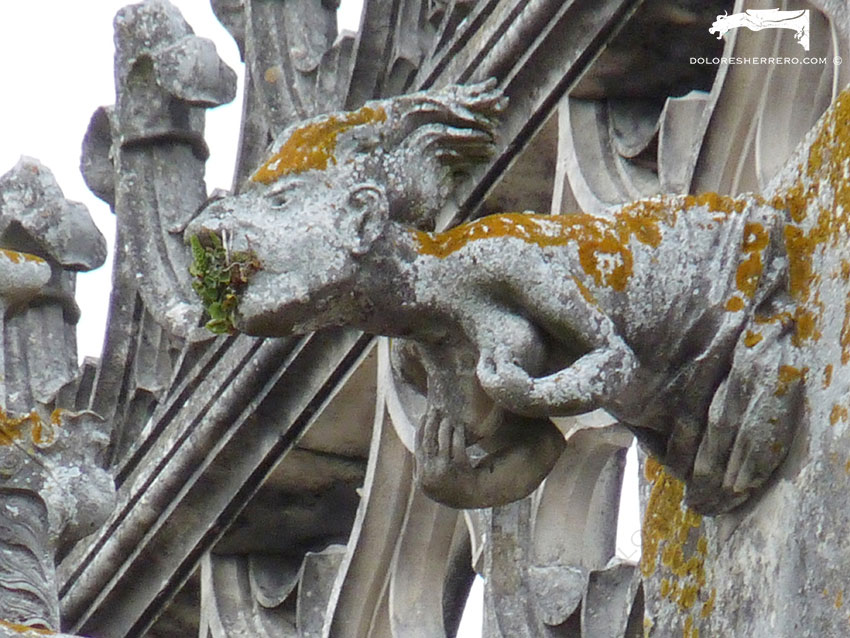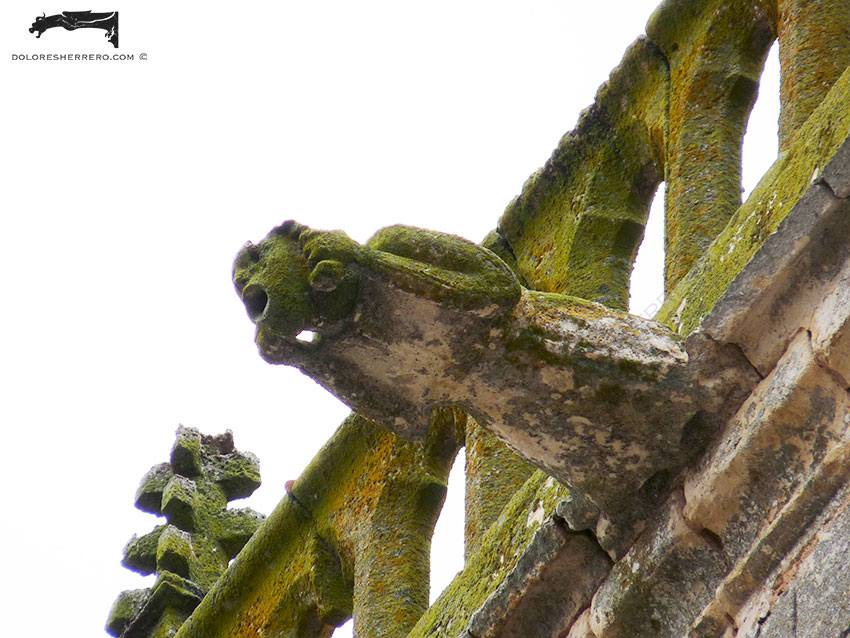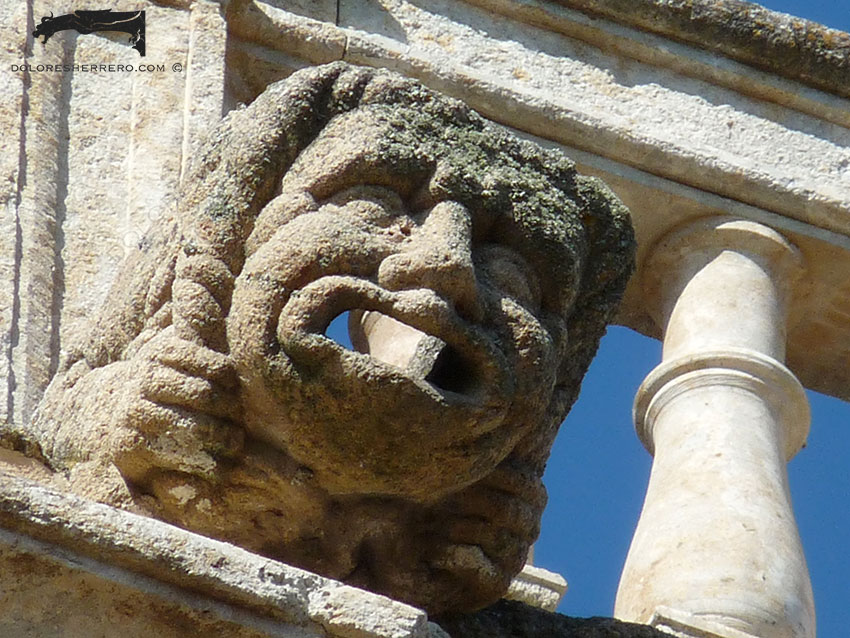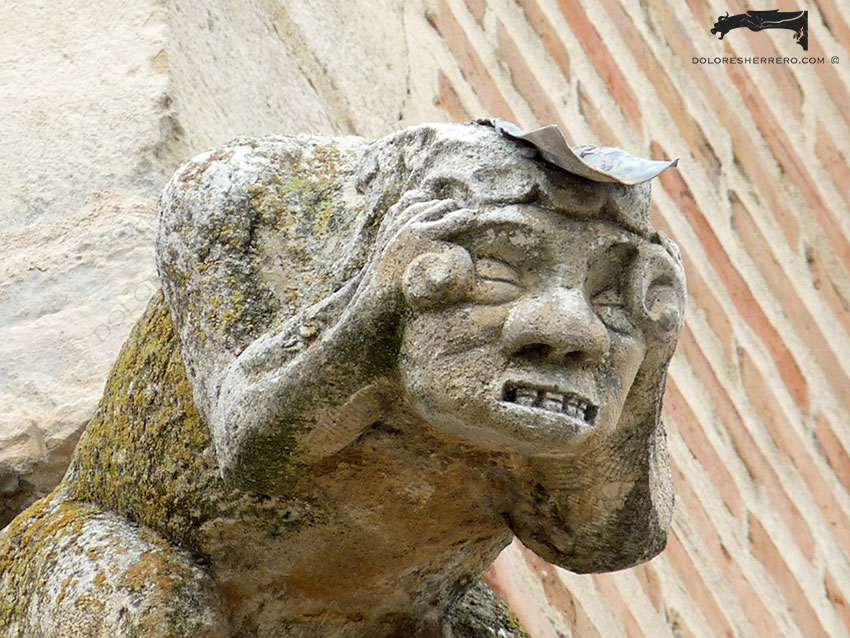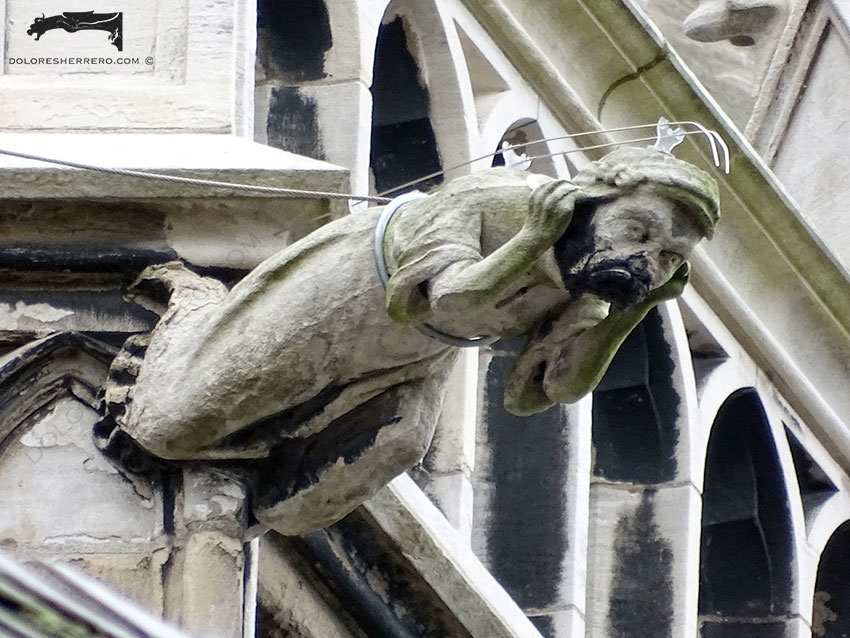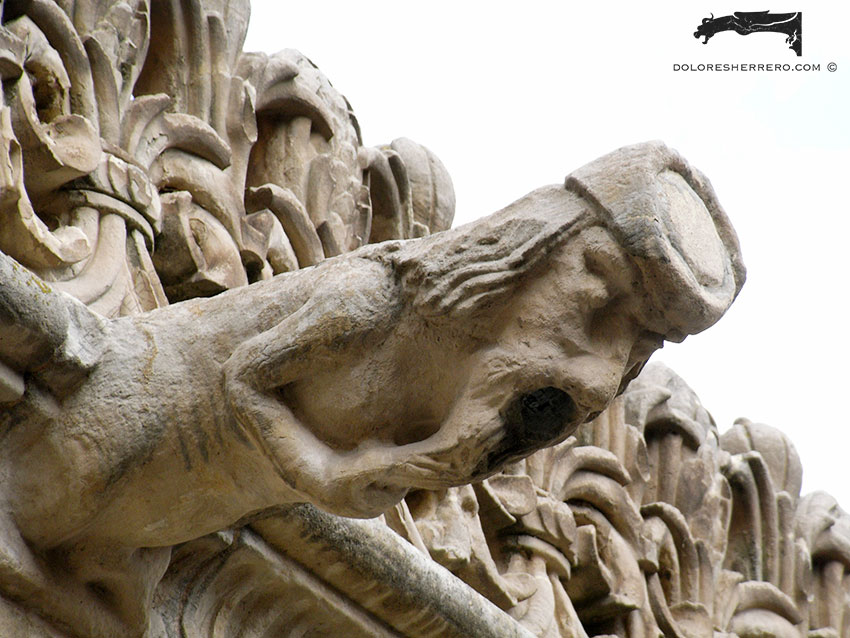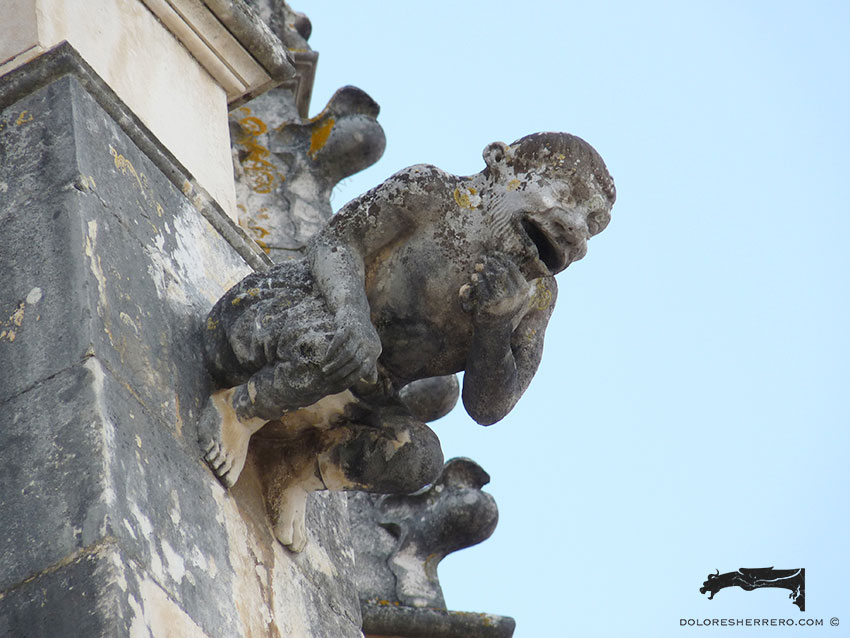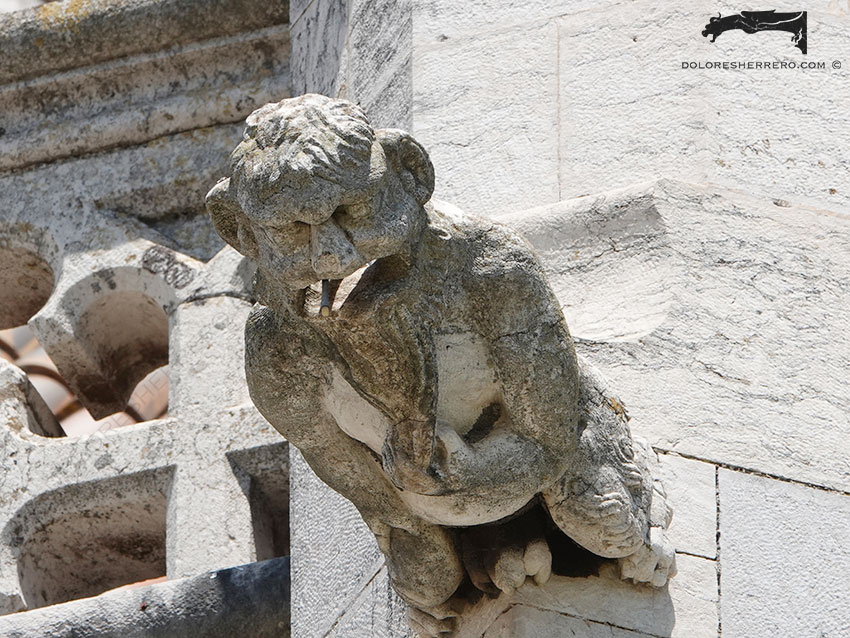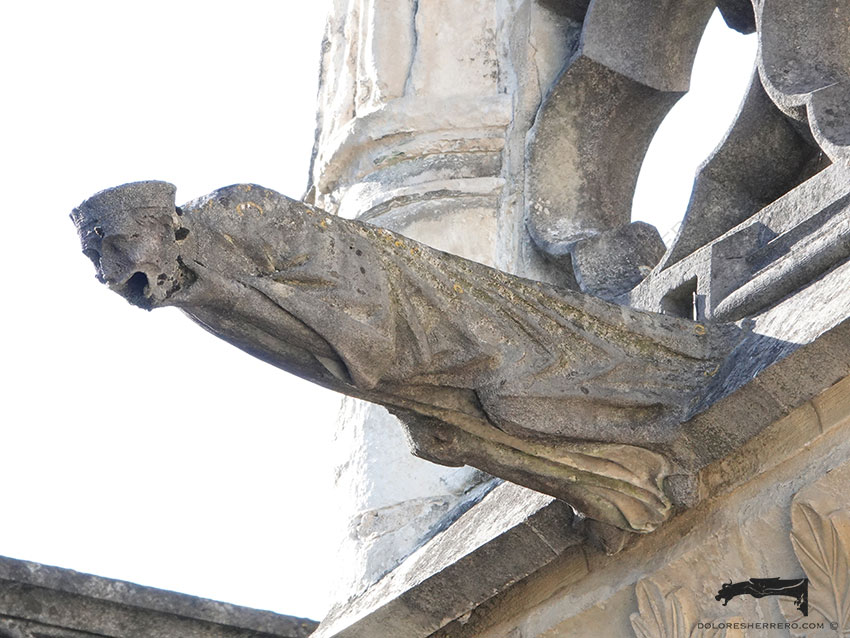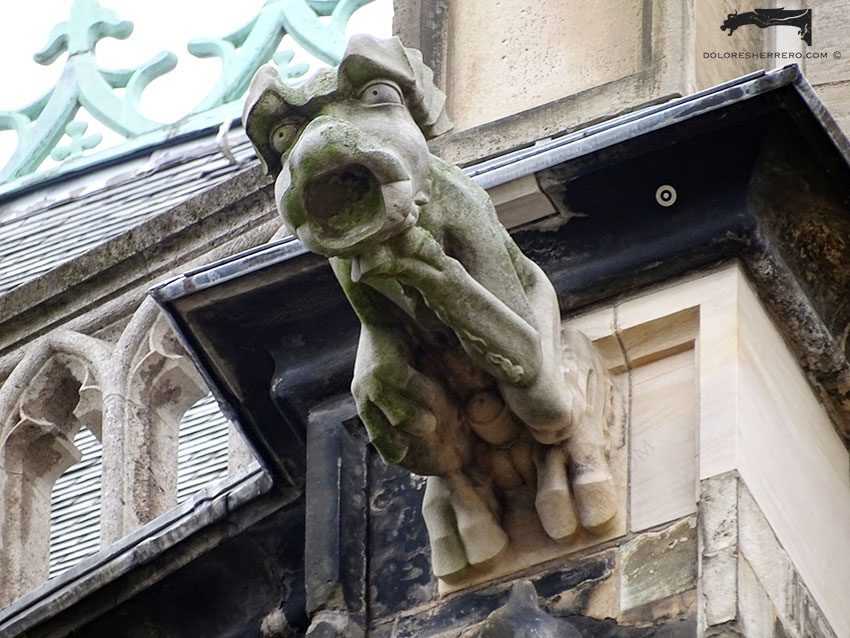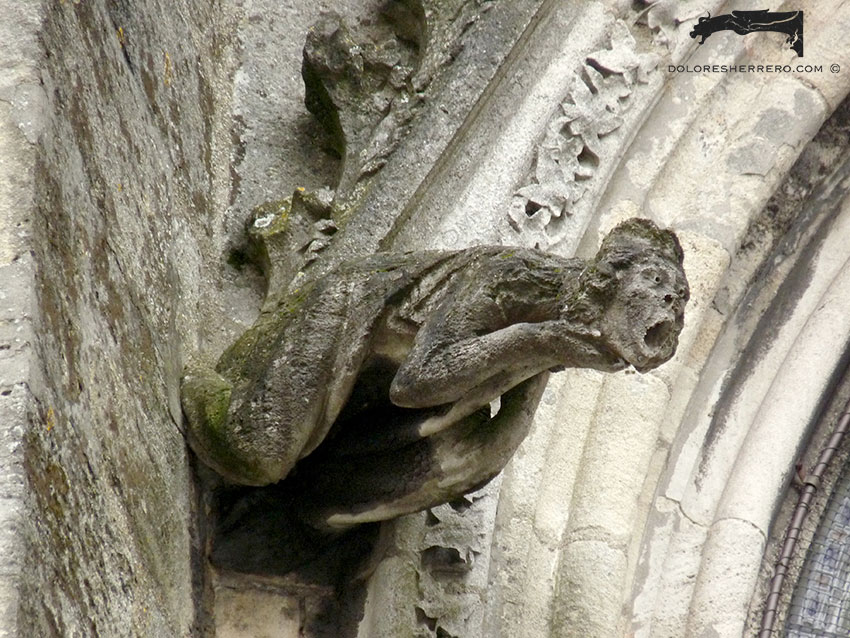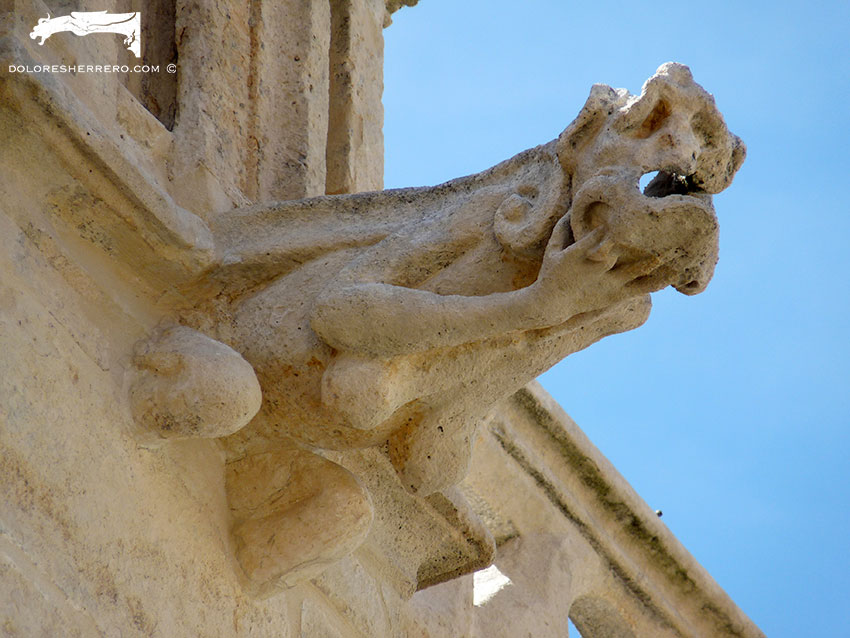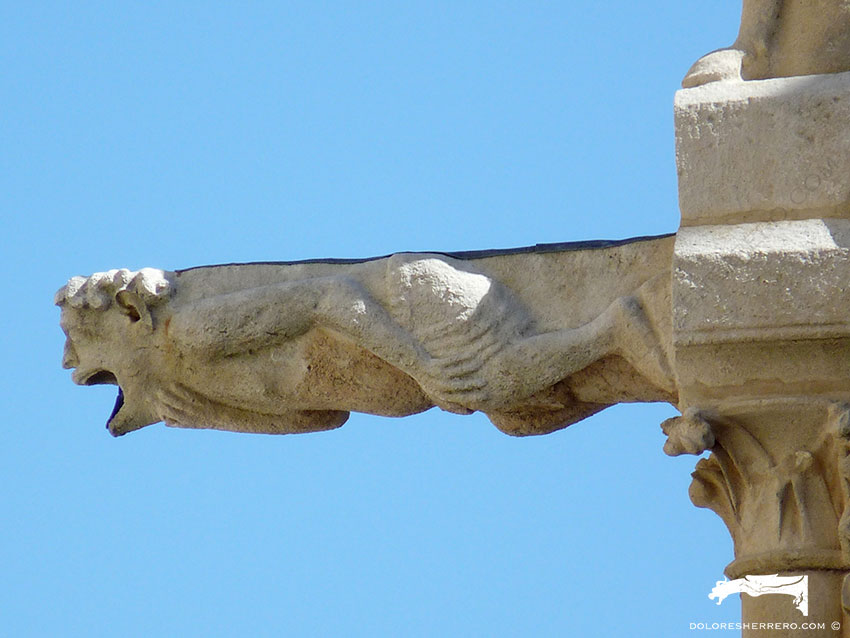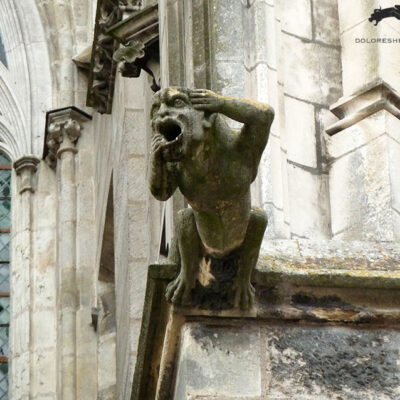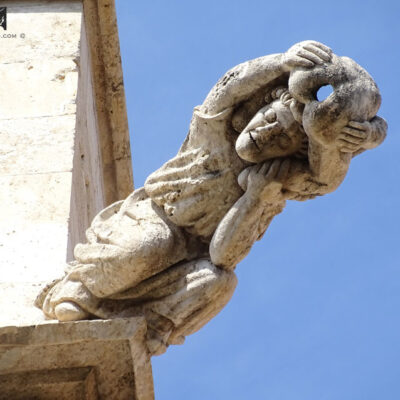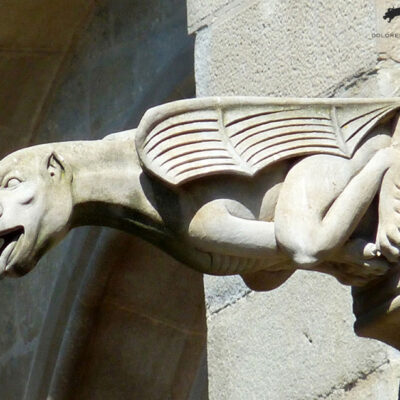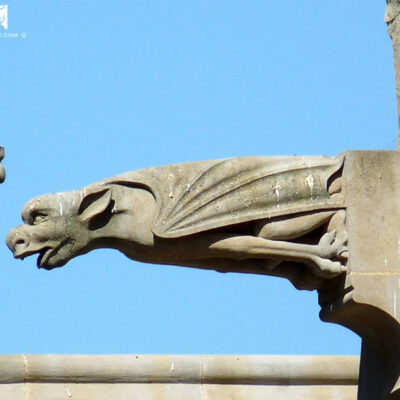As part of our discussion on the history and research of symbolism in gargoyles let’s continue to explore one of the most important and astonishing topics in their iconography. In a previous post we talked about facial expressiveness and today we’re going to start discovering other facial expressions and bodily gestures in gargoyle imagery.
We invite you to venture with us into the world of gesturality in these amazing stone beings, and we’ll begin with one of the most commonly seen gestures in gargoyles. It’s the gesture of lifting the hands up to the mouth and tugging on it towards the sides of the face. Historian Janetta Rebold Benton links this gesture with the sin of gluttony, likening the images to devouring giants. She says it could also be connected to the torment endured by Christ from people who spat on him, hit him and pulled at his hair. However, for this author, this gesture should be seen more as something comical, joyful and carefree; in England these funny faces and grimaces are traditionally depicted in choir stalls, an art that’s closely linked to gargoyle iconography.
Likewise, this gesture could be associated with hell and the diabolical. In passage 92 of the Pagina Meditationum by mystic Margarita de Oingt (13th century), in which she writes about her vision of hell, she says: “Afterwards they will send them from torment to another. They will be so hungry that they will eat their tongues and hands out of necessity”.
- Guarda Cathedral (Portugal)
- Aachen Cathedral (Germany)
- Ávila Cathedral (Spain)
- Guarda Cathedral (Portugal)
- Burgos Cathedral (Spain)
- Ciudad Rodrigo Cathedral (Spain)
- Salamanca Cathedral (Spain)
- Church of San Quirce in Burgos (Spain)
- City Hall in Brussels (Belgium)
- Burgos Cathedral (Spain)
- Church of Nossa Senhora do Pópulo, Coto e São Gregório in Caldas da Rainha (Portugal)
- Church of Nuestra Señora del Manzano in Fuenterrabía (Spain)
The pose of tugging at other parts of the body and the head appears frequently in gargoyles and is a gesture or movement that expresses a feeling and an intention. There are figures that pull at their breasts or nipples; others pull at their hair, probably as a sign of anger or madness; or at their ears…
- Batalha Monastery (Portugal)
- Aachen Cathedral (Germany)
- Church of San Quirce in Burgos (Spain)
- Ciudad Rodrigo Cathedral (Spain)
- Church of Nuestra Señora de la Soterraña in Santa María la Real de Nieva (Segovia, Spain)
- Aachen Cathedral (Germany)
Sometimes we see beings pulling at their beards, possibly a gesture of pain or suffering.
- House of Shells in Salamanca (Spain)
- Plasencia Cathedral (Spain)
- Batalha Monastery (Portugal)
- Church of Nossa Senhora do Pópulo, Coto e São Gregório in Caldas da Rainha (Portugal)
- Batalha Monastery (Portugal)
- Jerónimos Monastery in Lisbon (Portugal)
Another gesture that appears frequently is that of lifting one or two hands to the throat or the neck. According to Rebold Benton, the hand on the throat has been described as the sign of the order of artisan officials in medieval France (signe à l’ordre du compagnon). In this case, the hand would be placed in such a way that the thumb forms a right-angle like a set-square. Another interpretation is related to warning of the dangers of misusing anything that passes through the throat (food, drink, words), or it may also be linked with Adam and Eve and the apple and a reminder of Original Sin and the Fall.
- Bayonne Cathedral (France)
- Aachen Cathedral (Germany)
- Bordeaux Cathedral (France)
- Burgos Cathedral (Spain)
- Church of Our Lady in Trier (Germany)
- Bordeaux Cathedral (France)
- Burgos Cathedral (Spain)
- City Hall in Brussels (Belgium)
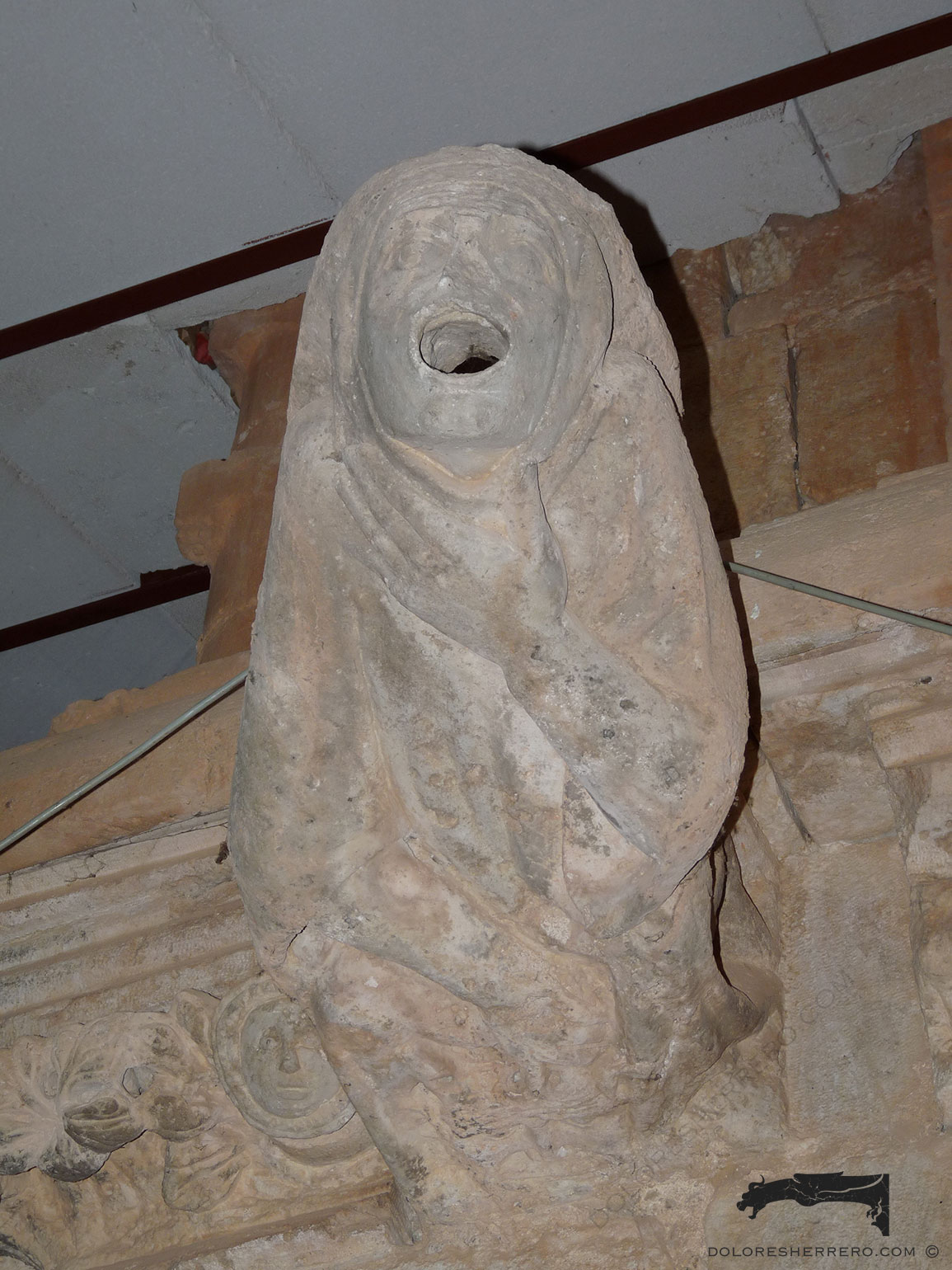
El Burgo de Osma Cathedral (Spain)
Gargoyles with great expressive strength, with gestures linked to emotions and intense, painful feelings, sculpted with skill and imagination.
Bibliography consulted
CIRLOT, V. y GARÍ, B., La mirada interior. Escritoras místicas y visionarias en la Edad Media, Madrid, Ediciones Siruela, S. A., 2008.
HERRERO FERRIO, D., La gárgola y su iconografía, Madrid, Universo de Letras, 2019.
REBOLD BENTON, J., Holy Terrors. Gargoyles on medieval buildings, New York, Abbeville Press, 1997.

Doctor of Art History and researcher specializing in the study of gargoyles.
I am Dolores Herrero Ferrio, and my thesis, “An Approach to the Study of Gargoyles of Gothic Cathedrals in Castilla and León”, is dedicated to the study of these fascinating figures.
If you like gargoyles and art history, you will also enjoy my book, “The Gargoyle and Its Iconography,” a book I have written with great care for those interested in the world of gargoyles.
I have created my own Encyclopedia of Gargoyles, a Gargopedia to share with you, where you will discover all the secrets and wonders of these enigmatic sculptures.
I hope you enjoy this Gargopedia as much as I have enjoyed creating it, and remember that each gargoyle has a story to tell, and here you will discover them all.
